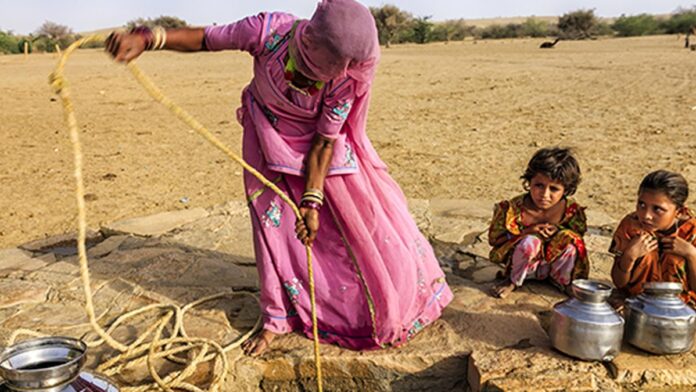
The move comes amid a recent World Bank report which said women faced a sharp drop in their labour force participation post-marriage in India. Image for representation
| Photo Credit: Getty Images
The Centre will soon bring out a national policy document on female labour force participation with a focus on providing an enabling atmosphere like a viable care economy structure.
An inter-ministerial team from the Ministries of Skill Development, Labour, Rural Development and Women and Child Development is working on it, informed sources told The Hindu.
Care economy is the sector of economic activities related to the provision of care, both paid and unpaid, for the present and future populations. It includes direct care, such as feeding a baby as well as indirect care, such as cooking and cleaning, health care, education and other personal and domestic services.

The move comes amid a recent World Bank report which said women faced a sharp drop in their labour force participation post-marriage in India.
According to the report, it is estimated that in India post-marriage, female employment rates drop by 12 percentage points, about one-third of the female pre-marital employment rate, even in the absence of children.
The sources said deliberations were on between the various ministries and that the document would focus on building a care-giving infrastructure to boost women’s participation in the labour market.
Core skilling package
One of the initiatives being explored is a core skilling package for caregivers for children, the sources said.
The policy paper will also look at providing child care facilities for women in the informal sector such as for workers under the National Rural Employment Guarantee Scheme.
The Ministry of Women and Child Development already runs the ‘Palna’ scheme, or the National Programme on Anganwadi-cum-Crèche, which provides day-care facilities for children of working parents.
The scheme aims to increase the participation of women in the workforce by providing a safe and secure environment for children’s health, nutrition, and cognitive development. The scheme is for children between the ages of 6 months and 6 years. It provides a range of services, including nutritional support, health and cognitive development, growth monitoring, immunisation, and education.
A total of 1,000 Anganwadi creches have been made operational till now as part of this scheme, the sources said.
Union Labour Ministry data say that in 2021-2022, the female labour force participation rate in India was higher in rural areas than in urban areas. In rural areas, 36.6% of women aged 15 years and above were in the labour force, compared to 23.8% in urban areas.
Published – December 01, 2024 08:29 pm IST
